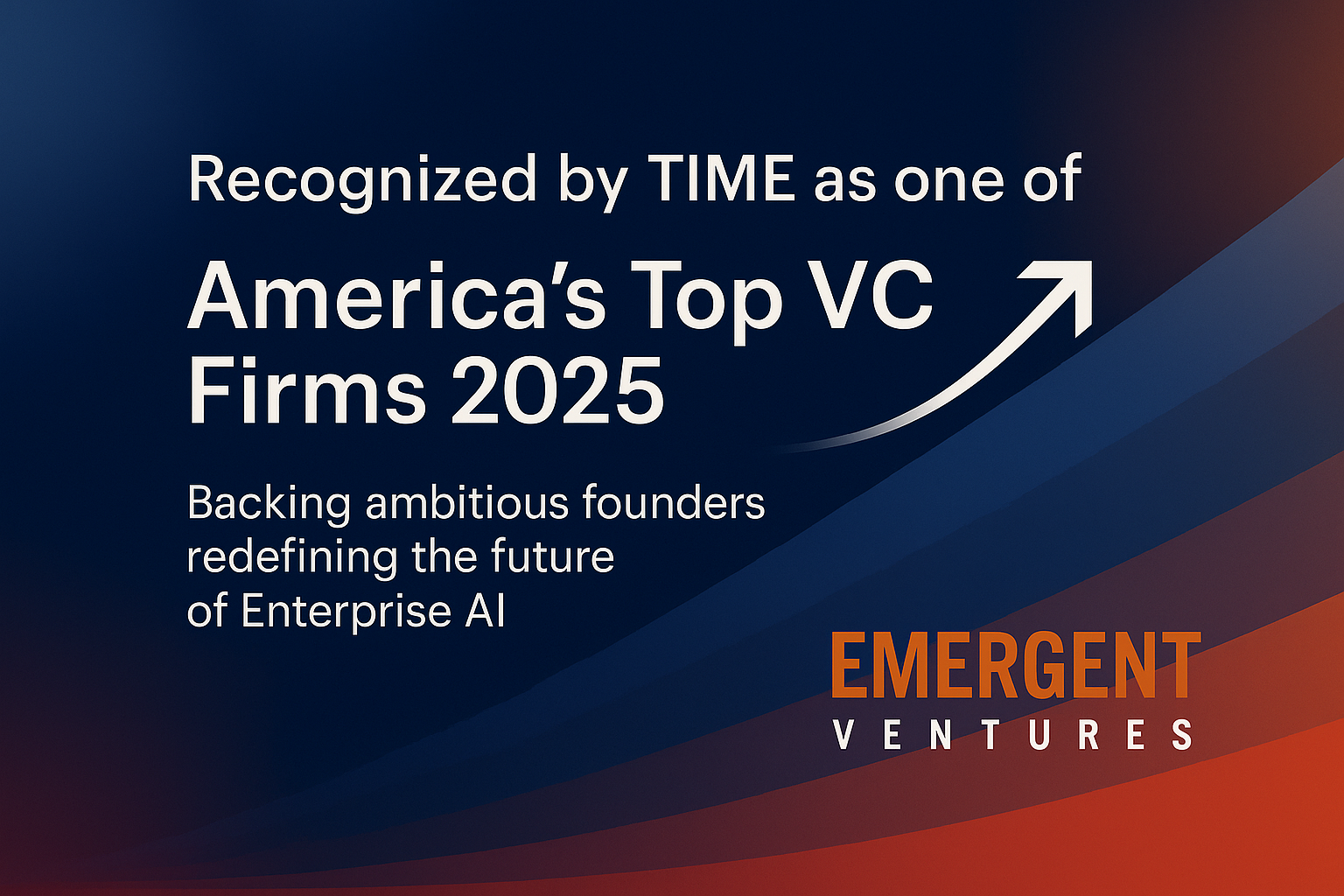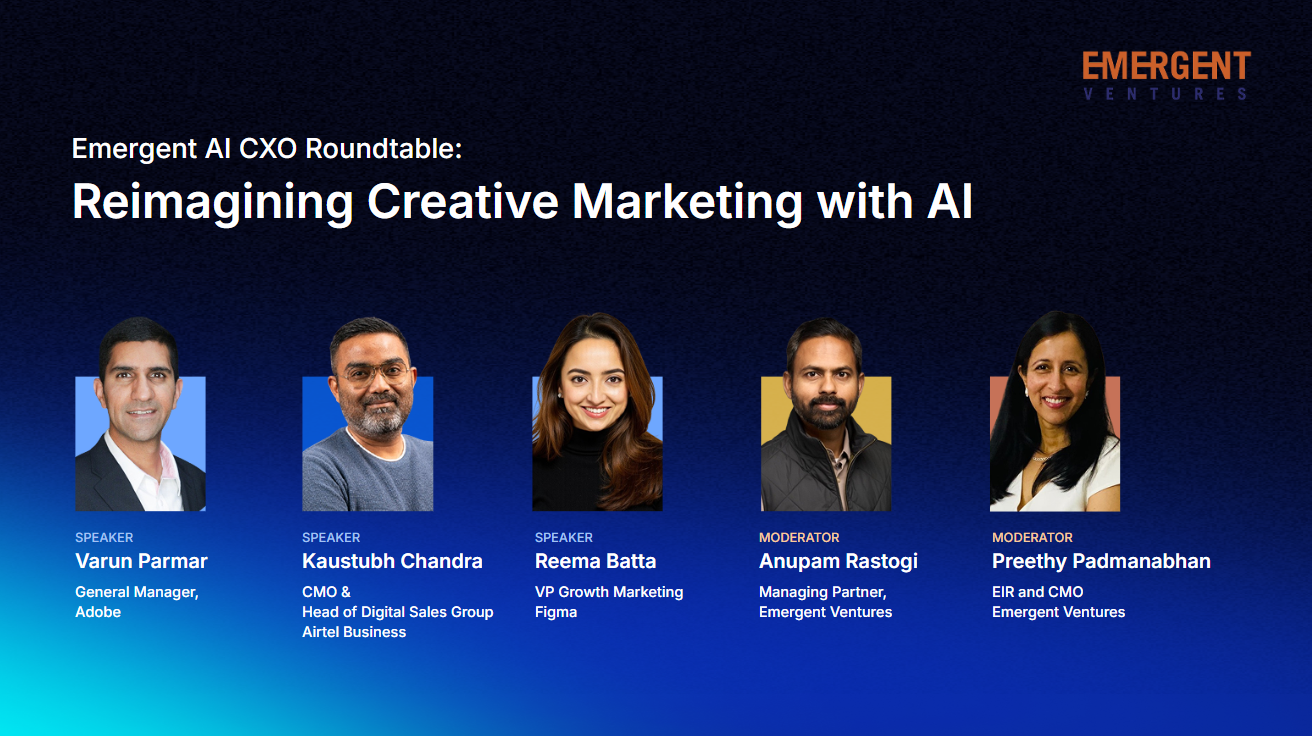In the early stages of a B2B SaaS or AI startup, there are few forces more powerful — and more underutilized — than high-quality customer discovery.
Done well, discovery dramatically increases your chances of reaching product-market fit, while minimizing costly missteps. And crucially, it’s something you can (and should) do before you write a single line of code.
At Emergent Ventures, we've observed a consistent pattern: the most successful founders engage in dozens, often hundreds, of deeply insightful conversations with their prospective users, buyers, and influencers. They don't stop at surface validation. They mine every conversation for actionable insights — shaping what to build, whom to build for, and how to sell.
If you're serious about giving yourself a structural advantage, mastering customer discovery is non-negotiable.
Why Customer Discovery is a Game-Changer
Done right, customer discovery helps you:
- Decide whether to pursue or kill an idea (Go/No Go)
- Sharpen your Ideal Customer Profile (ICP) and champion persona hypotheses
- Set initial product direction based on real-world pain points
- Recognize early adopter patterns and buying signals
- Build an initial network of champions and buzz
- Raise venture capital — with conviction and evidence, not just vision
For early-stage investors like us, an authentic window into your customer insights is a powerful leading indicator of founder quality and market pull.
But Be Careful: Discovery is Part Art, Part Science
It's easy to think you're doing customer discovery, but harder to do it well.
Common pitfalls include:
- Asking leading questions that bias the response ("Wouldn’t it be great if…?")
- Over-focusing on enthusiastic anecdotes rather than consistent patterns
- Getting overly swayed by the biggest name or loudest voice in the room
- Hearing what you want to hear (confirmation bias)
- Prematurely pitching instead of probing
To avoid these traps, think of customer discovery as a three-phase process:
1. Before the Conversation: Hypothesize and Target
Start with clear but flexible hypotheses:
- What problem are you solving?
- For whom? (ICP, champion persona)
- Why now? (urgency)
Prepare open-ended, non-leading questions. Target a mix of warm intros and cold outreach — otherwise your sample will be biased. Talk to users, buyers, influencers, and gatekeepers across a diverse range.
2. During the Conversation: Probe, Listen, Adapt
Focus on understanding the problem intensity:
- Is this a "hair-on-fire" issue (urgent and budgeted)?
- How are they solving it today?
- Have they actively searched for solutions?
- Would they be able to rally internal stakeholders and allocate spend?
Resist the urge to sell.
Instead, sharpen your surveying skills — not just asking the right questions, but listening actively and observing non-verbal cues like hesitation, excitement, or discomfort.
Sometimes what’s unsaid reveals more than what’s said.
Stay open: some of your biggest opportunities might lie adjacent to where you initially aimed.
3. After the Conversation: Distill and Iterate
After every 5–10 conversations, step back:
- Are you hearing consistent pain points?
- Are champion personas emerging organically?
- Is your ICP getting sharper or fuzzier?
Adjust your hypotheses and who you talk to next based on the signals you're receiving.
Pattern recognition > anecdotes.
Avoid letting the "biggest logos" or "loudest enthusiasts" distort your learning. The goal is not excitement — it's actionable insight.
And when you find engaged participants, keep them in your orbit — through thoughtful follow-ups, periodic updates, and early access invitations as your product evolves.
Borrow Proven Techniques
You don't need to reinvent the wheel. Consider tools like:
- Jobs To Be Done (JTBD) framework: Understand the "job" your product is hired for
- Customer journey mapping: Identify pain points along real workflows
- Problem prioritization matrices: Focus on high-pain, high-frequency problems
These frameworks can elevate the quality of your insights without slowing you down.
Make It a Habit, Not a Phase
The best founders institutionalize customer discovery as an ongoing discipline.
Markets shift. Technologies evolve. Customer needs are a moving target.
Discovery isn't just for pre-launch — it's your radar for staying ahead long-term.
Final Thought
If you haven’t yet talked to 50–100 potential users and buyers in a systematic, open-ended way — you’re operating with an incomplete map.
Great founders earn insights the hard way: conversation by conversation, insight by insight.
Mastering customer discovery isn’t extra work. It is the work.
Have you uncovered unexpected insights through your customer conversations? We'd love to hear your stories.
More from Emergent

We help founders get to the *next level
We’re hands-on partners to ambitious Enterprise AI founders. We invest early and help achieve product-market fit, build go-to-market, and scale into breakout growth.



